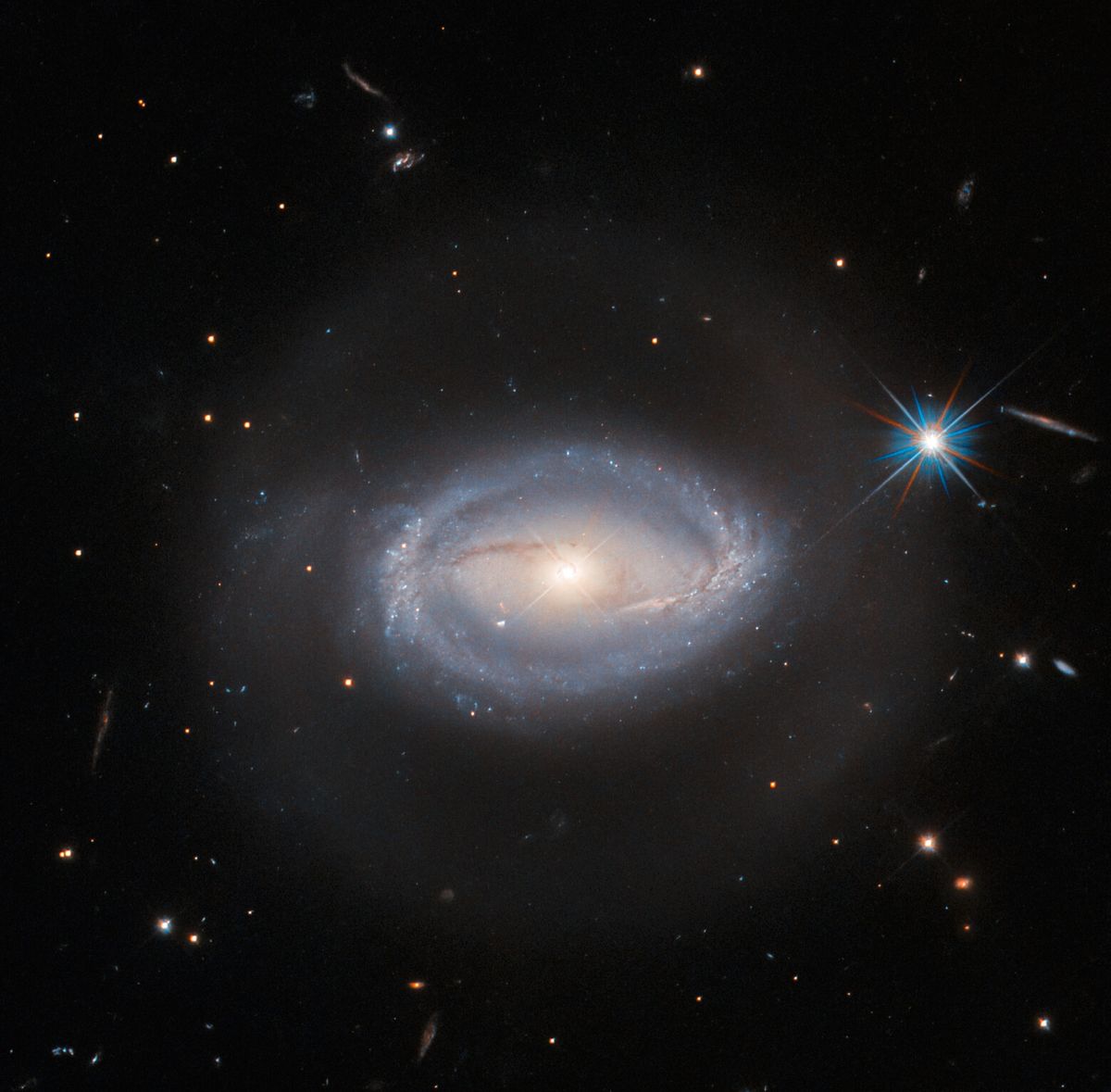Science
Related: About this forumHubble telescope spies mysterious celestial object that defies classification
By Stefanie Waldek published about 4 hours ago
Classifying Z-229-15 is complicated.

Z 229-15 — imaged here in beautiful detail by the NASA/ESA Hubble Space Telescope — a celestial object that lies about 390 million light-years from Earth in the constellation Lyra. (Image credit: ESA/Hubble & NASA, A. Barth, R. Mushotzky)
Space is hard, the adage goes. And we'd extrapolate that sentiment to the classification of celestial objects, particularly ones like Z 229-15.
A newly released image taken by the Hubble Space Telescope shows Z 229-15, which, at first glance, simply appears to be a spiral galaxy, given its two spiraling arms of stars emanating from a bright core. But it's far, far more than that.
Z 229-15 is one of those objects that fits several classifications, according to a statement(opens in new tab) released by the European Space Agency (ESA). "Z 229-15 is one of those interesting celestial objects that, should you choose to research it, you will find defined as several different things," the statement reads. While it's impossible to pin down a singular classification for Z 229-15, there are several overlapping definitions that together describe this wondrous celestial object.
First and foremost, Z 229-15 is indeed a galaxy, which is a gravitationally bound collection of stars.
Second, it's an active galactic nucleus (AGN), or rather, it contains an AGN. An AGN is a region at the center of a galaxy that is exceptionally bright due to a supermassive black hole at its core. It's not the black hole itself that's so luminous, but rather all the material from the galaxy that has been trapped in a spinning disk around it, having been drawn toward the black hole by its intense gravitational pull. That disk heats up and emits massive amounts of energy across the electromagnetic spectrum, resulting in the brightness.
More:
https://www.space.com/hubble-telescope-mystery-object-lyra-Z-229-15
303squadron
(679 posts)Cool story, thanks.